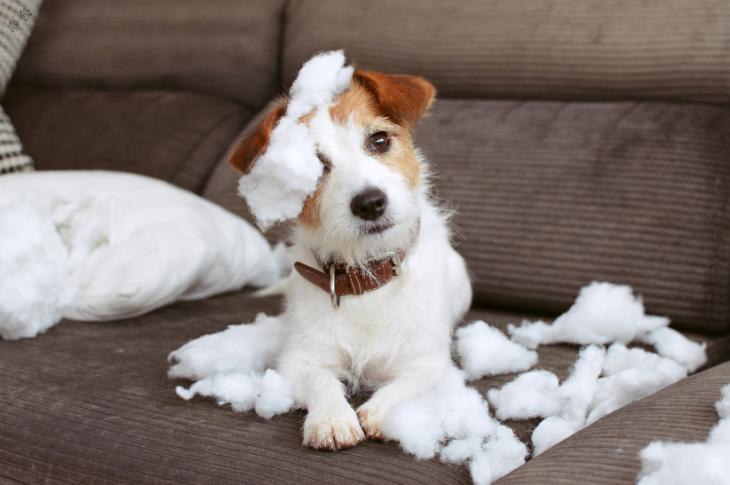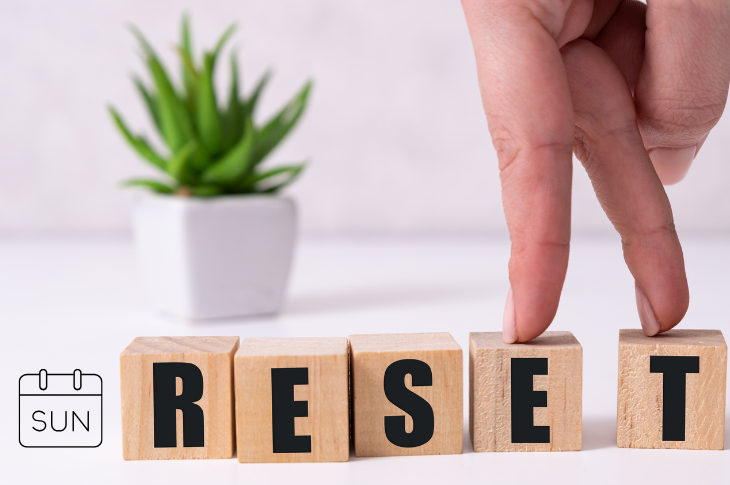
Separation anxiety is a common issue among pets, especially dogs. Being at home without their owner or guardian can cause stress for a variety of reasons. These feelings of stress can lead to a range of symptoms and behaviours, many of which may prove to be destructive to themselves or their environment. It’s important for dog owners to understand why separation anxiety happens, what it looks like, and how to treat it, to ensure their dog is as happy and healthy as possible.
What is separation anxiety?
Separation anxiety is a form of anxiety that can impact people (particularly children) and animals. When a person or animal faces separation from the people who make them feel safe and comfortable, this can cause intense feelings of fear, loneliness, and frustration. This can be particularly difficult to deal with in animals, as it’s not possible for their owners to explain to them why they’re leaving and when they’ll be back. Young children may also have difficulty understanding why they’re being separated from their family members or guardians.
What causes separation anxiety in dogs?
There are various reasons a dog may experience separation anxiety when separated from its owner, such as fear, lack of stimulation, and feelings of frustration.
Fear
Some dogs experience separation anxiety due to a fear of being alone. In puppies, this can be because they have yet to spend any time alone. In older dogs, particularly rescue dogs, there may have been a previous experience that causes them to feel fear when their owner leaves. If something frightening happened in their past while they were alone, or they experienced excessive amounts of time alone, they’re likely to fear their owner leaving them as they associate it with a scary experience.
This can cause many typical anxiety induced behaviours, including restlessness and excessive howling or barking. These behaviours may only occur when the owner is out of the house, or they may begin when the owner is preparing to leave.
Lack of stimulation
All dogs require plenty of exercise and stimulation to lead a happy, healthy life. If a dog is lacking mental or physical stimulation and is left alone with lots of pent up energy, they may begin to show signs of separation anxiety. If they have no way to let out this energy or remain occupied when they’re left alone, this can cause stress and lead to filling the void with destructive behaviours, such as chewing on furniture. Boredom may also encourage the dog to attempt to escape, which can cause harm to them and their environment.
Frustration or agitation
Just like in humans, when dogs require something and cannot get it, this leads to frustration. In the case of leaving them at home alone, the thing they need or want and cannot get is their owner’s attention. They may attempt fulfil this need by trying to find their owner via attempts to escape, or replace it with another action that placates their need for attention and comfort. A frustrated dog is very likely to act out and show signs of separation anxiety.
What are the main signs of separation anxiety in dogs?
Each dog is different, which means the symptoms that dogs with separation anxiety show can differ from one dog to another. However, there are some common signs and symptoms to look out for.
Aggressive or destructive behaviour
One of the most common signs of a dog having separation anxiety is engaging in aggressive or destructive behaviour. This may include chewing furniture, digging, breaking objects, urinating or defecating inside, scratching at the door, among others. Typically, this occurs when they have no constructive outlet for their built up energy and need for external stimulation or comfort.
Pacing, restlessness, and repetitive behaviours
Pacing and engaging in compulsive or repetitive behaviours is common among humans and animals when experiencing stress. This is because the anxiety can make it difficult to sit still or rest. Pacing and other repetitive behaviours often occur in a pattern, especially as dogs tend to thrive off of a sense of routine.
Attempts to escape
Some dogs attempt to escape their kennel or home when left on their own. This may be to find their owner or simply to let out some of their built up energy and find ways to stimulate themselves. These attempts can be harmful and cause dogs to injure themselves. They may also cause substantial damage to their owner’s home, and depending on where they escape to, they may damage the property of others as well. If the escape attempt is successful, further dangers may present themselves, such as busy roads or prolonged exposure to heat without access to water.
Excessive howling or barking
Dogs communicate in many ways, including barking, howling, and whining. When they’re left on their own, dogs use these communication methods in excess as they receive no response. Howling, whining, and barking for attention from their owner may work when the owner is home, so they try this method when the owner leaves in an attempt to achieve the same results.
Depression
Lonely dogs can become very depressed, especially those that are left alone for prolonged periods of time on a frequent basis. When depression becomes severe, the dog may lose its appetite, energy, and other key functions and personality traits. In addition to their mental state, this can cause medical issues if not addressed.
Excessive panting, drooling or trembling
Common signs of stress in dogs include panting, drooling, and shaking or trembling. These can be caused by any form of stress or anxiety, including separation anxiety. In the same way that humans may sweat or shake when they feel nervous, these symptoms are involuntary for stressed dogs. These behaviours may begin after the owner has left or while they’re preparing to leave.
How can separation anxiety be treated in dogs?
There is no set cure for separation anxiety, and it’s not something many dogs naturally grow out of. However, there are various training techniques that have proven successful in nervous canines.

Increase exercise and stimulation
Increasing the amount of exercise the dog gets before being left alone is an easy way to reduce the amount of energy they have. In theory, if a dog has less energy, it will be more likely to rest and less likely to engage in tiring destructive behaviours when left alone. Interacting with other dogs, if its safe to do so, increases a dogs mental stimulation. This may also help reduce energy levels if the dogs engage in physical play together.
Increase solo enrichment
In addition to increasing their mental and physical stimulation before leaving, owners can also make an effort to provide enrichment when they’re away. There are lots of toys designed to occupy pets for prolonged periods to avoid anxious behaviours. For example, many owners provide their dogs with snuffle mats that contain hidden treats to find, or peanut butter filled Kongs, which follow a similar principle. The idea is to give the dog a constructive and enjoyable place to direct their attention and energy and distract them from the fact that they’re alone.
Provide a safe place
Dogs should always have a safe place to take refuge in, regardless of whether their owner is home or not. This may be a bed, a kennel, or a specific area of the house that they take comfort in. Having this area available becomes increasingly important when they’re alone, as fearful dogs that seek their owners comfort may be able to find some peace and relief in their safe place.
Gradually increase time spent away
Going from spending no time apart from their owner to spending long periods alone is more likely to induce anxiety than a gradual approach. As with many large changes, taking baby steps and focusing on steady progress is typically the best way to achieve positive results. When taking this approach, it’s important to do so with the help of other methods, such as facilitating extra exercise and providing toys to keep them occupied.
When beginning with this method, it’s best to leave them in different areas of the house for short periods and slowly build up the amount of time they’re comfortable with spending alone. Once this no longer causes anxiety, leaving the house for short periods is the next step. Very gradually building up the amount of time the dog is left alone reduces the likelihood of them becoming overly stressed and engaging in anxiety-induced behaviours.
Use confidence-building techniques
A confident dog is typically less likely to become anxious, even when left alone. Simple ways to improve confidence include teaching basic tricks with rewards, and rewarding them for good behaviours they perform on their own. For example, a dog may rest on its own in a different room from anyone else, or take it upon itself to go outside to urinate. Both of these behaviours should be encouraged with rewards to help reinforce the habit and build their confidence.
Encourage independence and alone time
Owners can encourage their dogs to spend time alone and increase their sense of independence without leaving the house. This could be through the use of baby gates, which allow owners to section off parts of the house where the dog cannot enter without permission. This reduces their ability to follow their owner around mindlessly and challenges them to engage in other activities on their own. Using enrichment toys when increasing independence is a great way to ensure that the dog is enjoying their time and does not feel that being alone is a form of punishment.
Key takeaways
Here are the key points to remember about separation anxiety in dogs:
- Any type of dog at any age can develop separation anxiety.
- This condition often stems from the dog’s previous experiences with being alone or a lack of experience with being alone.
- The main reasons for anxious behaviour to present in dogs that are separated from their owners include fear, lack of stimulation, and frustration.
- Signs and symptoms of canine separation anxiety can present themselves in many ways depending on the dog, including destructive behaviours, escape attempts, pacing, and having accidents inside the house.
- While there is no cure for separation anxiety in dogs, there are plenty of training techniques that can be used to reduce it.
- It’s important to ensure that anxious dogs don’t associate alone time with punishment.
- A gradual approach tends to be much more effective than taking large steps straight away.










